Seconds after his Black Hawk helicopter took off for a March 10 training mission — filled with seven Marine special operators and three fellow Louisiana Army National Guardsmen — the pilot remarked: "Gee, it's dark as [expletive]."
Less than five minutes later, after a series of maneuvers and radio transmissions that suggested both helo pilots were disoriented by the lack of visibility, the UH-60M hit the waters of Santa Rosa Sound at an unsurvivable speed.
Everyone on board was killed, marking the single deadliest day for Marine Corps Forces Special Operations Command since its creation in 2006.
Marines who'd been expecting to provide maritime support for the exercise would instead pilot their watercraft through a debris field.
The tragedy is that these troops should not have been in the air that day. The crews were warned repeatedly in briefings of the weather restrictions, according to an investigation involving both LAANG and MARSOC Ppersonnel. Knowing the restrictions ules, the helo crews went out on the exercise, anyway, the investigation found, nothing the soldiers "disobeyed a direct order" by flying that day.[[Can we get some clarification on this point? Whose orders did they disobey? If they weather was bad, why was there an exercise? Had someone higher up in the chain called it off? GH]]
I can only tell you what I told Tony: All names are redacted, so I don't know who gave the mission briefs and thus created the order that was disobeyed. Nobody higher up in the chain called the mission off. The weather was bad, but the entire night was not a total blackout -- it's clear from the report (and the story, I hope) that things started iffy and got progressively worse, which would explain why the whole mess wasn't canceled before dinner.
Details about who gave the mission brief instructing the troops not to fly under those conditions were redacted. The Louisiana National Guard declined to discuss the report. But in the wake of the accident, investigators recommended new training procedures and safeguards meant to prevent similar tragedies from happening in the future, according to the report.
Chief Warrant Officer 4 George Wayne Griffin Jr. , one of the Louisiana Guard's top pilots, made the decision to fly in weather conditions worse than the 1,000-foot ceiling and three-mile visibility outlined in all mission briefs, the report found. He was selected for the MARSOC mission in part because he was known as an "aggressive" pilot, according to the investigation found.
, one of the Louisiana Guard's top pilots, made the decision to fly in weather conditions worse than the 1,000-foot ceiling and three-mile visibility outlined in all mission briefs, the report found. He was selected for the MARSOC mission in part because he was known as an "aggressive" pilot, according to the investigation found.
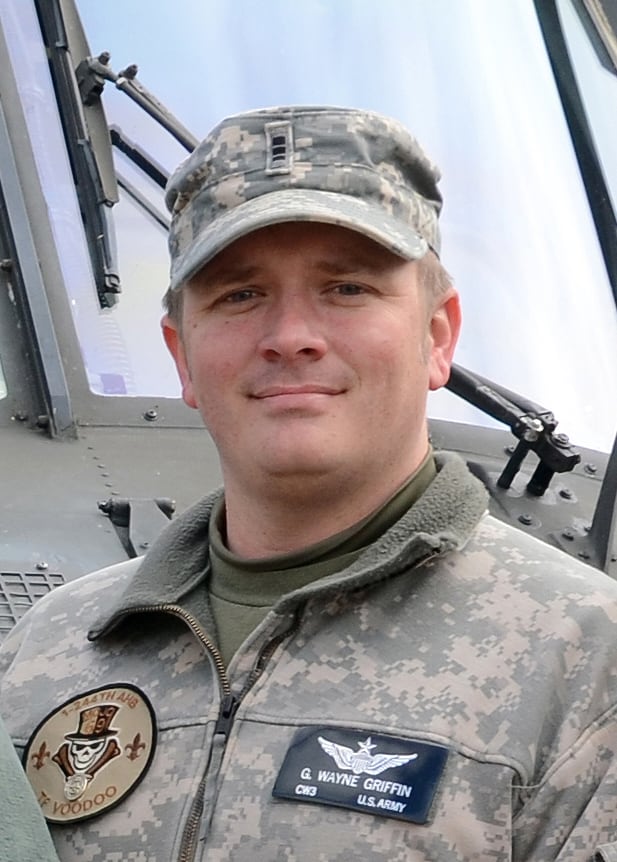
Chief Warrant Officer 4 George Wayne Griffin Jr.
Photo Credit: Courtesy Photo
At least one witness interviewed for the investigation, which was obtained recently by Military Times via a request under the Freedom of Information Act request, said Griffin was informed of ceilings at less than 200 feet about less than an hour before his Black Hawk took off.
Multiple witnesses said weather conditions deteriorated dramatically throughout the evening, during which two helicopters, each loaded with MARSOC Raiders, were to participate in "Helo Cast" water insertion training, per the report. Training the previous night on similar maneuvers had been successful, the report states, as had a series of operations the month before that had marked the first joint training operations between LAANG crews from 1st Assault Helicopter Battalion, 244th Aviation Regiment, and MARSOC Marines.
But this night, about 15 seconds after the helicopter, call sign called MOJO 69, was over the water, there were already signs of trouble. Griffin said he was "pulling back to the east," according to transcriptions of cockpit communications, when the helicopter actually was turning north.
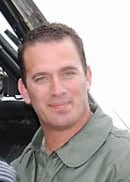
Chief Warrant Officer 4 David Strother
Photo Credit: Courtesy Photo
The pilot, with nearly 1,100 hours of night-vision flight on his lengthy aviation record, began making erratic maneuvers, the report states. The helicopter climbed and fell rapidly. It went backward. It spun. He ceded control to co-pilot Chief Warrant Officer 4 George David Strother , who also exhibited signs of disorientation and would suggest engaging the autopilot, which didn't work because the aircraft was "outside the required flight parameters." [[can we explain what that means a bit? GH]]
, who also exhibited signs of disorientation and would suggest engaging the autopilot, which didn't work because the aircraft was "outside the required flight parameters." [[can we explain what that means a bit? GH]]
I believe this was phrased as such by investigators to make it clear that there was not a mechanical/software/systemic failure of the autopilot system -- it was simply employed under conditions where it was not designed to work (i.e., 17 seconds before impact). Unsure how you want to tweak.
Strother's last communication – "climb, climb" – came three seconds before impact.
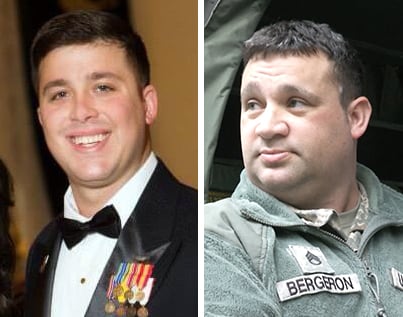
Staff Sgt. Thomas Florich, left, and Staff Sgt. Lance Bergeron
Photo Credit: Courtesy Photos
Two other LAANG soldiers died in the crash:
- Staff Sgt. Lance Jacob Bergeron
 , 30, who served as an active-duty Marine from 1994 to 1998, transitioned into the Marine Corps Reserve until 2001, then joined the Guard and would make two Iraq deployments.
, 30, who served as an active-duty Marine from 1994 to 1998, transitioned into the Marine Corps Reserve until 2001, then joined the Guard and would make two Iraq deployments. - Staff Sgt. Thomas Charles Florich III
 , 26, a sergeant at the time of the crash who was would be posthumously promoted to staff sergeant. He joined the LAANG in 2007, the year after his brother-in-law, Sgt. Jay R. Gauthreaux
, 26, a sergeant at the time of the crash who was would be posthumously promoted to staff sergeant. He joined the LAANG in 2007, the year after his brother-in-law, Sgt. Jay R. Gauthreaux , was killed by an improvised explosive device in Iraq while deployed with 3rd Heavy Brigade Combat Team, 1st Cavalry Division.
, was killed by an improvised explosive device in Iraq while deployed with 3rd Heavy Brigade Combat Team, 1st Cavalry Division.
Seven Marines with 2nd Marine Raider Special Operations Battalion [[They recently renamed from 2nd Marine Special Operations Battalion. GH]] perished, including some who had served with distinction during combat:
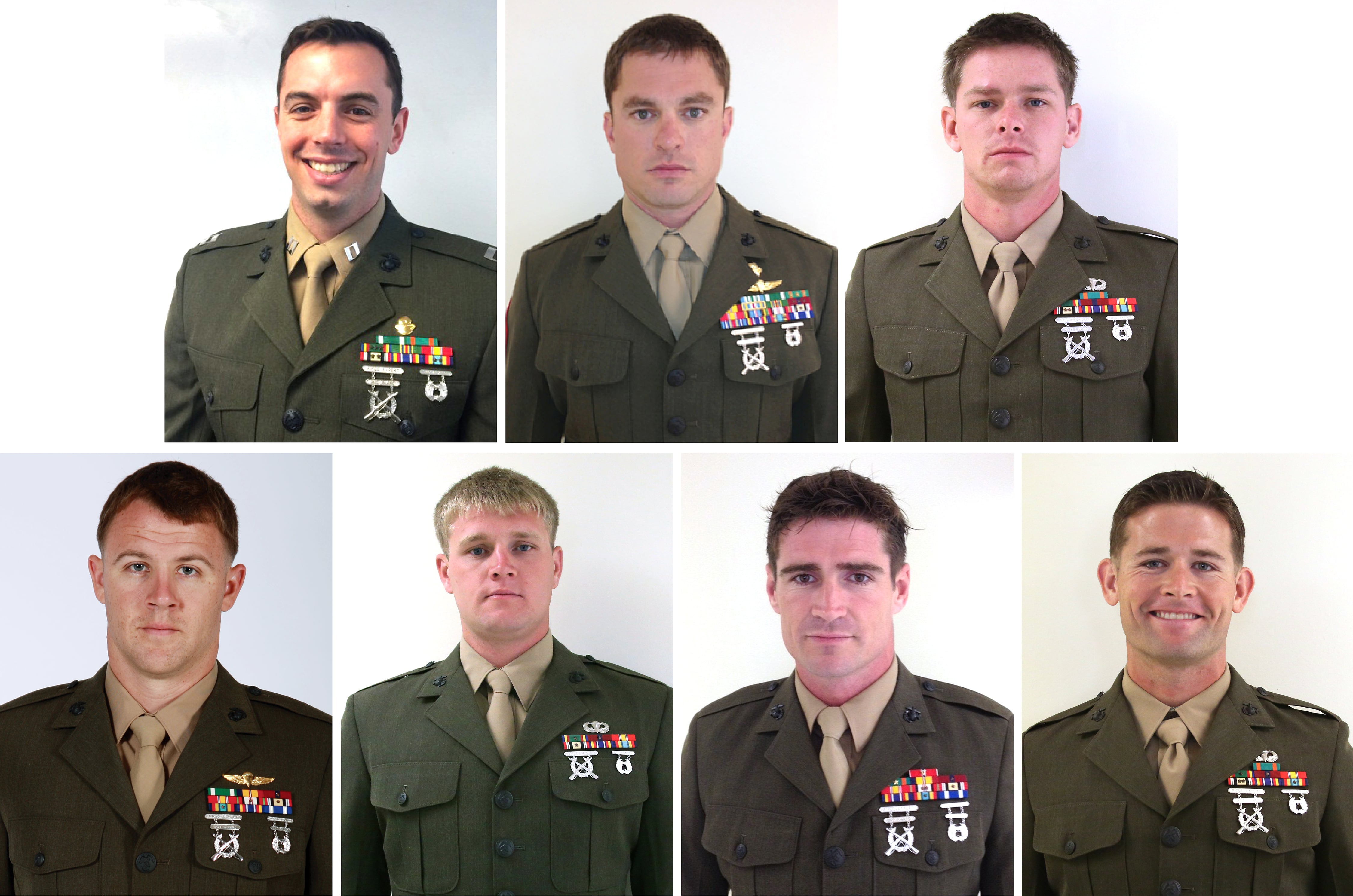
Top, left to right: Capt. Stanford Henry Shaw III, Master Sgt. Thomas Saunders and Staff Sgt. Marcus Bawol; bottom, left to right: Staff Sgt. Andrew Seif, Staff Sgt. Kerry Kemp, Staff Sgt. Liam A. Flynn, Staff Sgt. Trevor P. Blaylock
Photo Credit: Marine Corps
- Staff Sgt. Andrew Seif, 26
 , had received the Silver Star Medal four days before the crash for braving enemy fire in an attempt to save a mortally wounded fellow Marine. Seife served as the special operations team leader during the exercise.
, had received the Silver Star Medal four days before the crash for braving enemy fire in an attempt to save a mortally wounded fellow Marine. Seife served as the special operations team leader during the exercise. - Staff Sgt. Trevor Blaylock
 , 29, who deployed to Iraq in 2008, two years before his selection to attend the MARSOC Individual Training Course.
, 29, who deployed to Iraq in 2008, two years before his selection to attend the MARSOC Individual Training Course. - Master Sgt. Thomas Saunders
 , 33, the team's operations chief, who served in Iraq, Afghanistan and Kosovo.
, 33, the team's operations chief, who served in Iraq, Afghanistan and Kosovo. - Staff Sgt. Liam Flynn
 , 33, who served as a squad leader in Afghanistan in 2009 and returned there in 2012 with Marine Special Operations Team 8231, the same team he was with in the sky over Florida. Flynn was raised in County Kildare, Ireland, according to the Irish Times, which first wrote about the investigation. An Irish flag and a Raiders patch were placed atop his casket during a March 31 ceremony at Arlington National Cemetery, the newspaper reported.
, 33, who served as a squad leader in Afghanistan in 2009 and returned there in 2012 with Marine Special Operations Team 8231, the same team he was with in the sky over Florida. Flynn was raised in County Kildare, Ireland, according to the Irish Times, which first wrote about the investigation. An Irish flag and a Raiders patch were placed atop his casket during a March 31 ceremony at Arlington National Cemetery, the newspaper reported. - Capt. Stanford Shaw III
 , 31, who deployed to Iraq in late 2007 and again in 2009. He graduated from the Naval Academy in 2006 and began MARSOC training courses in 2012.
, 31, who deployed to Iraq in late 2007 and again in 2009. He graduated from the Naval Academy in 2006 and began MARSOC training courses in 2012. - Staff Sgt. Marcus Bawol, 27
 , was a critical skills operator with the team. His wedding had been set for October, Bawol's sister told Marine Corps Times shortly after the crash.
, was a critical skills operator with the team. His wedding had been set for October, Bawol's sister told Marine Corps Times shortly after the crash. - Staff Sgt. Kerry Kemp, 27
 , deployed to Iraq as a machine gunner attached to a motor transport company before beginning MARSOC training in 2010.
, deployed to Iraq as a machine gunner attached to a motor transport company before beginning MARSOC training in 2010.
'Aggressive at getting things done'
Less than three minutes before the first aircraft hit the water, the second Black Hawk flying with MOJO 69 aborted its mission.
Both helicopter crews "disobeyed a direct order of [redacted] by choosing to fly in lower then [sic] briefed weather minimums," according to the report. It wais unclear whether crew members in the second Black Hawk, which aborted its mission less than three minutes before the first aircraft hit the water, were disciplined for this breach. Col. Pete Schneider , chief spokesman for the Louisiana National Guard, said via email that the Guard will offer no further comments on the incident.
, chief spokesman for the Louisiana National Guard, said via email that the Guard will offer no further comments on the incident.
Requests for comment from family members of the helicopter crew via phone messages and emails either were not returned or denied. Attempts to reach family members of the MARSOC team members via a command spokesman were not successful.
Griffin likely wasn't pushed on his decision, the report says, because of the high esteem in which he was held by members of his crew and others in the unit. He was selected for the training operation, at least in part, because the soldier in charge of putting the Guard team together "wanted someone who was aggressive at getting things done," according to the investigation. That soldier's name is redacted from the report.
Griffin, 37, had 1,017 combat hours and 6,112.2 combined military/civilian flight hours, and had flown with night vision goggles for 1,082.9 hours as of the day before the incident, according to the report. Most of that time was in other types of aircraft, including as a C-12 Huron twin-engine turboprop plane pilot. He'd flown 81.8 hours with NVGs in a UH-60M and 357.7 hours overall.
Some of those hours came over Iraq, where he'd been deployed twice, most recently in 2008. Some came over Louisiana in support of three post-hurricane assistance missions, including Katrina. Strother had deployed in support of missions in Iraq, Afghanistan and Kosovo, returning from the latter in November 2014. He'd also flown over his home state during the aftermath of three hurricanes.
A UH-60 instructor pilot, Strother, 44, had 2,486 total flight hours, including nearly 735 in combat. He'd logged 13 hours with NVGs aboard a UH-60M.
'My heart sinks and panic ensues'
The investigation into the tragedy offers a glimpse at the sometimes dangerous nature of MARSOC training, which is often shrouded in secrecy.
MARSOC is the youngest of the military's special operations forces, and the loss of seven skilled operators in one day was a blow to the 9-year-old command.
"To have such a tremendous group of Marines ... [with] the experience they had and the cohesion and teamwork and everything else that they exhibited, it definitely hit us all hard — and by having that many all at one time," Maj. Gen. Joseph Osterman, MARSOC's commander, said in at a March 13 press news conference. "It is a very tight organization, and ... in this particular case, they were all from the same team so they were very, very close."
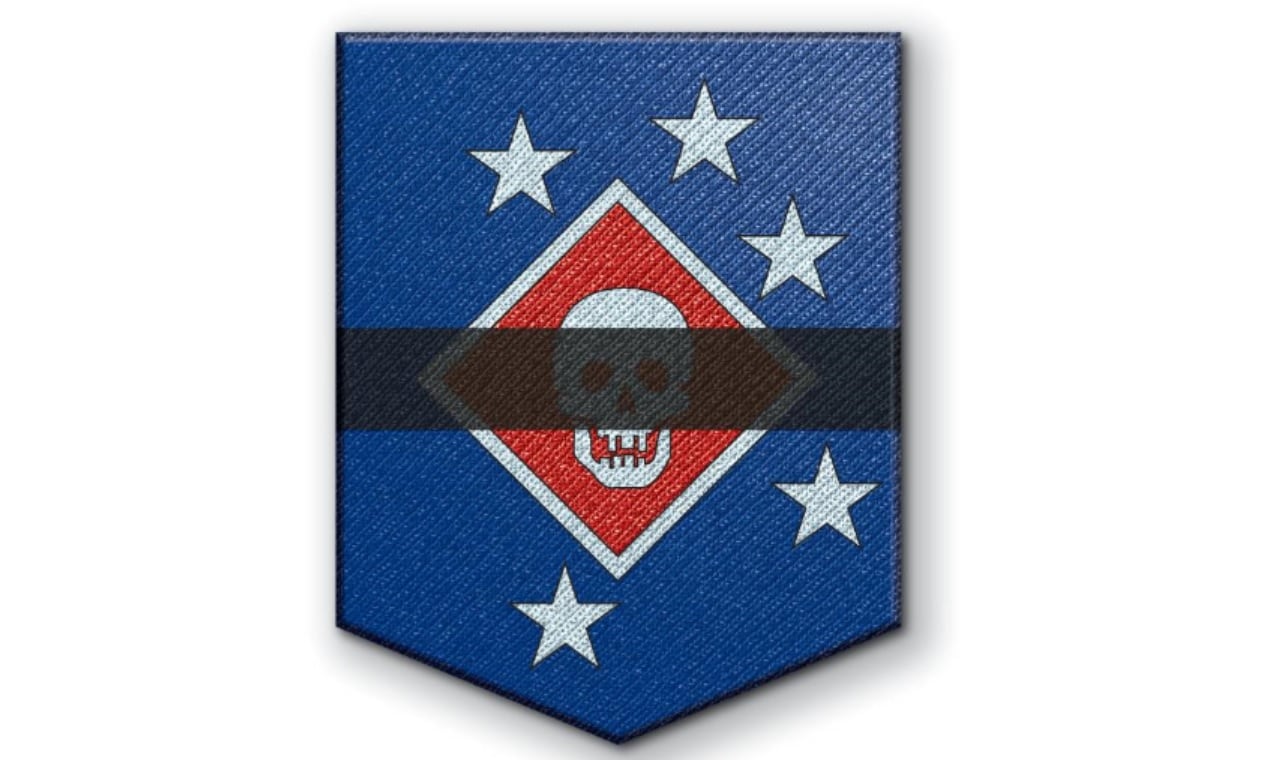
Marines shared photos of the iconic Marine Corps Forces Special Operations Command Raiders patch with a black bar through it following the March Black Hawk helicopter crash that killed seven Marine Raiders.
Photo Credit: Staff
The Marine Raiders began preparing for this mission months prior as part of a special operations air-ground integration course called HAVEACE at Hurlburt Field, an Air Force installation in Florida.
The Marines arrived there in early February. They conducted a series of live-fire and simulated training, mission planning, and day and nighttime insertion and extraction exercises.
The day before the crash, both aircraft participated in special patrol insertion/extraction system training, or SPIES. During the training, the troops prepared for operating in areas where landing is not possible. The Marine operators wore harnesses and were lowered or pulled from the helicopters on land and in water. Other times they wore parachutes or rode in rubber boats back to shore.
The day of the crash, Marines aboard MOJO 69 had also practiced getting in and out of the helicopter via rolled cave ladders.
As they prepared for another round of water insertion training, contact with the helicopter was lost. Search-and-rescue efforts began about 75 minutes later after loss of contact with the helicopter.
Part of the reason for the delay may have been an assumption by aviators that the crew aboard the doomed helo had begun operating under inadvertent instrument meteorological conditions, when visibility vanishes and pilots must quickly shift to flying via instruments to avoid disaster. Under such conditions, one witness told investigators, "there is a lot of radio traffic, trying to get vectors, trying to get approach control. … [S]ometimes it can take 45-50 minutes for a guy to contact them telling them, 'Yeah, we landed at Hurlburt Field.' "
A crew member with the second helicopter told investigators that instead of intruding on radio traffic, he and another individual had sent text messages to the MOJO 69 crew. Those went unanswered, as did other attempts to communicate with the lost helicopter.
"So then I call all four of the crew members," the witness said, "and every one of them goes to voicemail … my heart sinks and panic ensues."
Preventing future mishaps
After the crash, the weather conditions that had contributed to the accident made searching for the missing troops and helicopter difficult. Fog severely hampered emergency personnel's efforts.
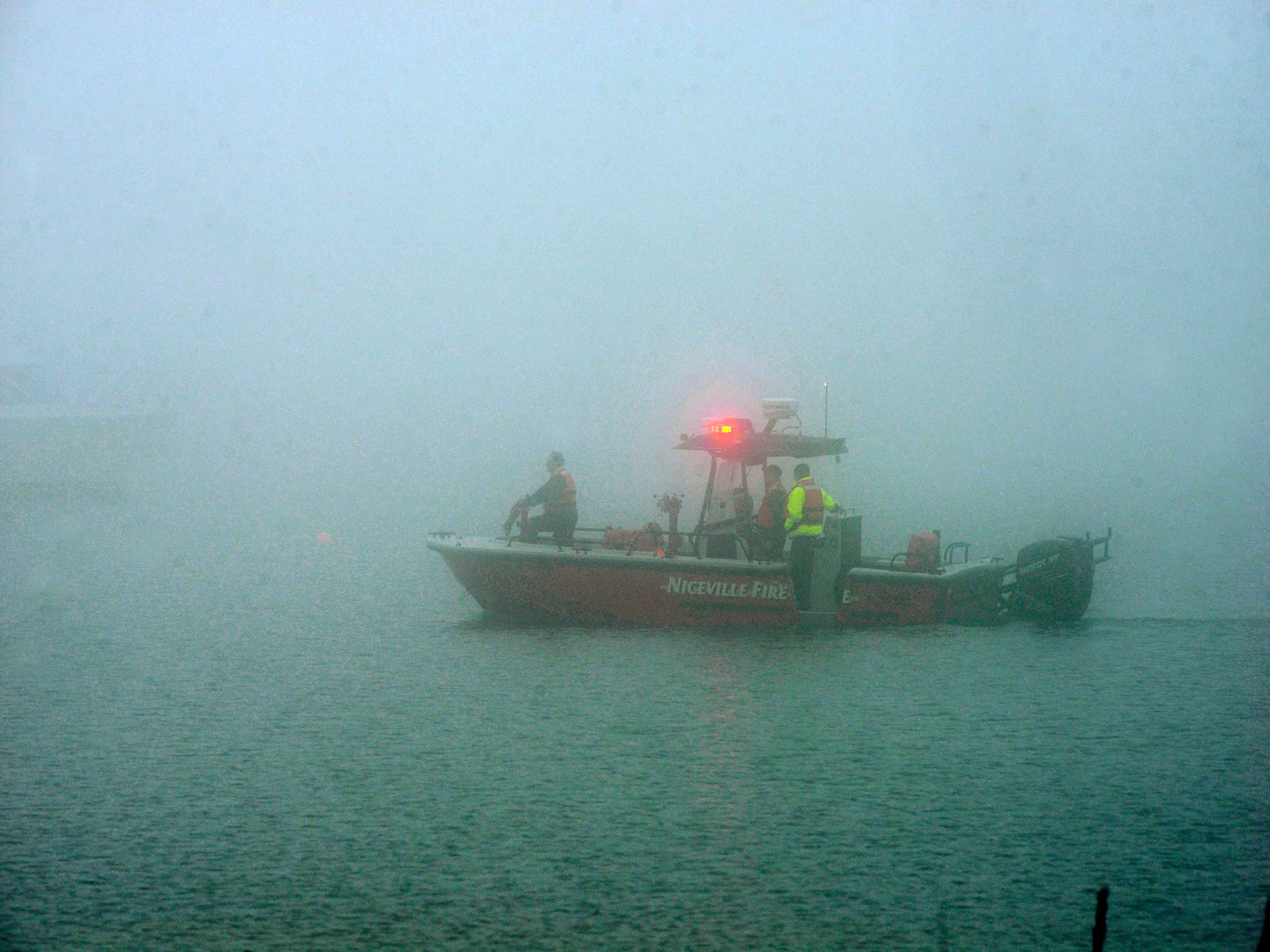
A search boat is shrouded in fog as rescue workers search for Marines and soldiers in an Army Black Hawk helicopter near Navarre Beach, Fla., on March 11.
Photo Credit: Devon Ravine/Associated Press
When one Marine boat crew discovered wreckage, members hoped it was from an earlier crash, one Marine told investigators, and that MOJO 69 was somewhere else, safe.
"We then rolled up on another panel, picked that up, and it was the part of the fuselage that had the MOJO emblem, and we radioed it in and we were like, 'Hey, we have debris and we are pretty sure that is from that bird,'" said the witness, whose name was redacted from the report. With no Coast Guard on the scene yet, "we were still looking, and we kept moving along and we found a dive booty, a dive boot. We just kept looking, we were hoping that we found someone, but there was no one to help." [[Kevin, you had this line above, which was interesting: Marines who'd been expecting to provide maritime support for the exercise would instead pilot their watercraft through a debris field. -- can you build that out a bit here please? GH]]
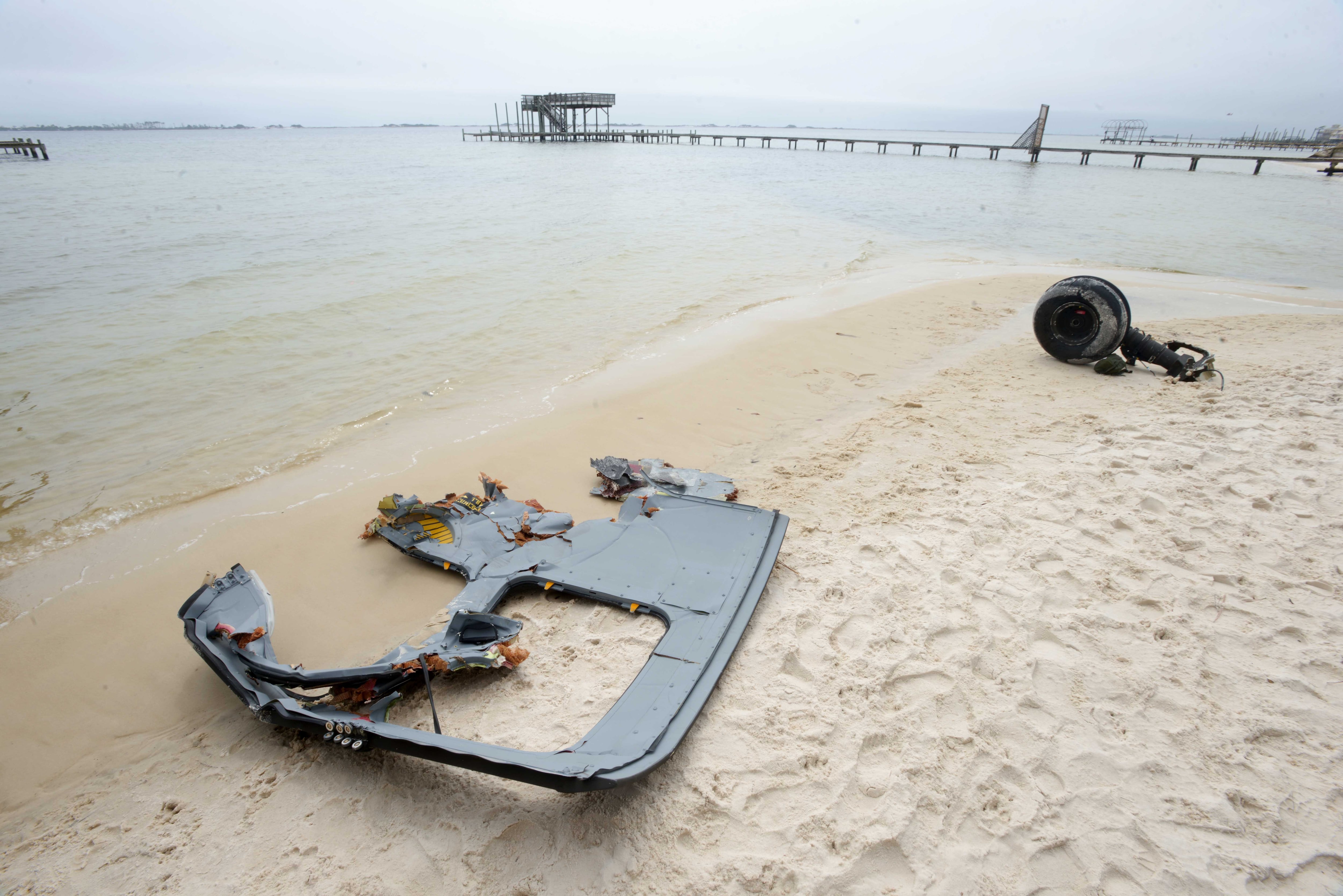
A wheel and pieces of fuselage from an Army Black Hawk helicopter sit along the shoreline of Santa Rosa Sound near Navarre, Fla., on March 11.
Photo Credit: Devon Ravine/Associated Press
The night of the crash, first responders in rescue boats had such a difficult time seeing each other that they were forced to cruise at just 5 mph. After searching a 94-square-mile radius for 36 hours, the Coast Guard was forced to cancel the search. It then moved into a recovery stage when officials announced that all lives were believed to have been lost.
It was nearly a week before all of the bodies and the aircraft were recovered from the crash site.
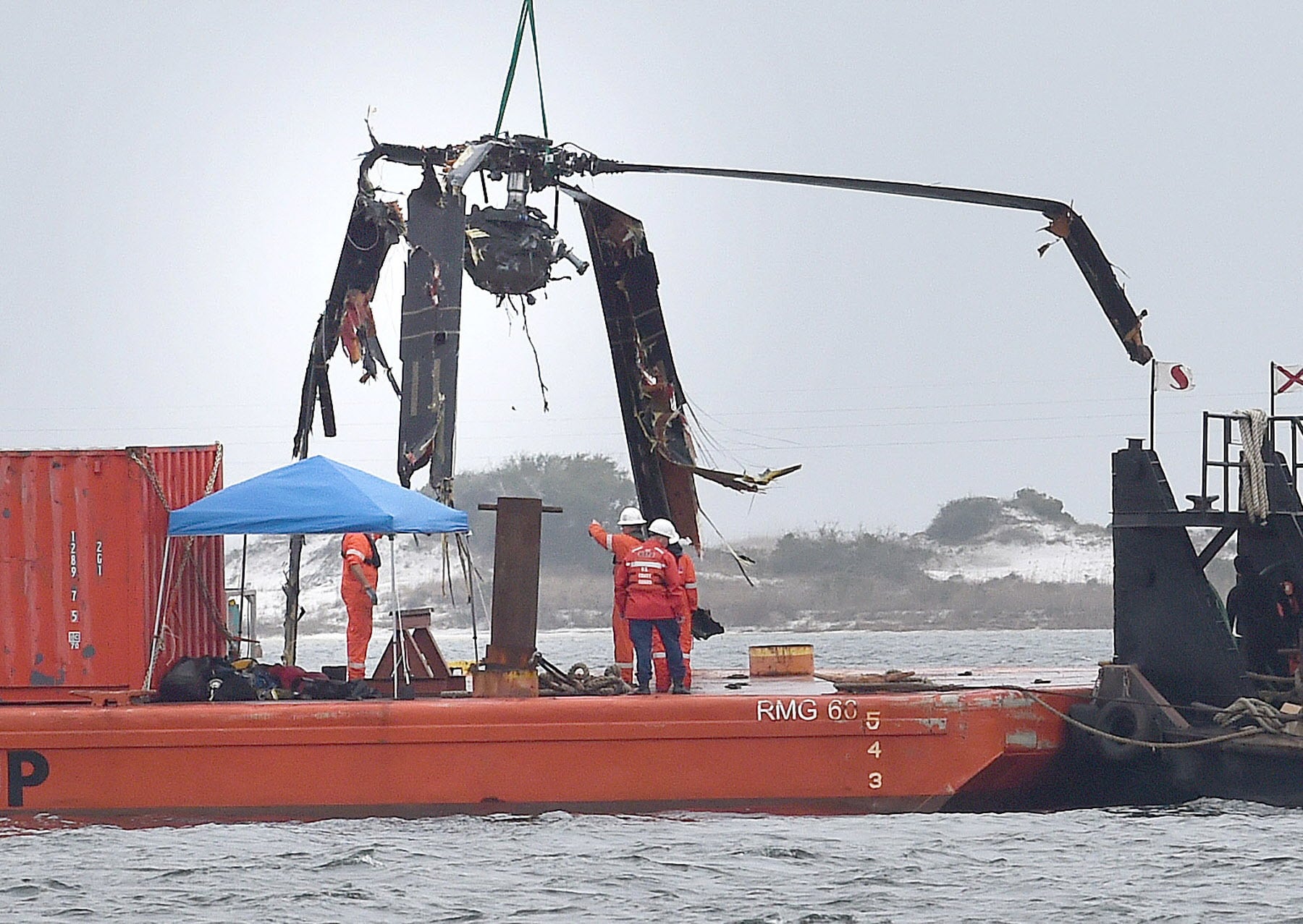
Crews lower a piece of a Black Hawk helicopter onto a barge in the Santa Rosa Sound March 13. The helicopter, which crashed in dense fog during a training mission, was carrying seven Marines and four Louisiana National Guardsmen.
Photo Credit: Nick Tomecek/Northwest Florida Daily News via AP, Associated Press
Unlike some accident investigations which can suggest multiple courses of action to avoid a repeat of a tragic incident, the report makes only three recommendations, including one regarding improved training records that was not related to the crash's cause.
The three other recommendations all involved refresher courses — on weather briefing rules, spatial disorientation guidelines and proper aircrew coordination training. Investigators deemed the third item necessary because, they said, crew members from both helicopters "did not challenge CW4 Griffin when he decided to conduct the mission when weather conditions were at lower ceilings and less visibility than the authorized weather minimums. This is likely because of the high respect and over-confidence that the aircrews of both aircraft had in the decision making and piloting abilities of CW4 Griffin."
When the witness who'd called the crew members was asked by an investigator, just 10 days after the incident, if he had any "issues, weather-wise, instrument-wise, with Dave or G. Wayne?" he said no.
"I would let [my] family fly with them," he said, ending a 14-page statement.
He was not the only unnamed LAANG member to make such a remark. A senior officer recalled flying with Griffin in Iraq in next-to-no visibility conditions and said he "wouldn't want to have been with anyone else."
"You guys will figure out what you want to figure out," the senior leader told investigators, "but I can tell you this: I would've put my wife and kids in the back of that aircraft. … I don't have a finer pilot and a better crew."
Kevin Lilley is the features editor of Military Times.




